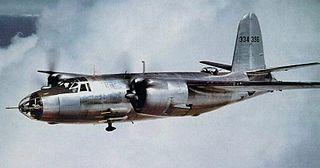
The VIII Fighter Command was a United States Army Air Forces unit of command above the wings and below the numbered air force. Its primary mission was command of fighter operations within the Eighth Air Force. In the World War II European Theater, its primary mission was air superiority. Its last assignment was with the United States Air Forces in Europe at RAF Honington,

The 67th Cyberspace Operations Group is a unit of the 67th Cyberspace Wing. Headquartered on Kelly Field Annex's Security Hill, the group is an Air Force information operations unit.

The IX Troop Carrier Command was a United States Army Air Forces unit. Its last assignment was with the Ninth Air Force, based at Greenville Army Air Base, South Carolina. It was inactivated on 31 March 1946 as a component command of the Ninth Air Force, based in the United Kingdom.

The XXIX Tactical Air Command (Provisional) was a provisional United States Army Air Forces unit, primarily formed from units of IX Fighter Command. Its last assignment was with Ninth Air Force at Weimar, Germany, where it was inactivated on 25 October 1945. The command was formed as a counterpart to IX Tactical Air Command and XIX Tactical Air Command to support the United States Ninth Army throughout its easterly advance from its formation on 15 September 1944, until VE-Day. Following the end of the war, the unit was converted from a provisional unit to a regular unit.

The V Fighter Command is a disbanded United States Air Force headquarters. It was established as the 2nd Interceptor Command in June 1941, with responsibility for air defense of the northwest United States and training fighter units in its area of responsibility. Shortly after the attack on Pearl Harbor, the Army formed Western Defense Command, with responsibility for the entire Pacific coast. All air defense functions were transferred to 4th Interceptor Command, and the command was slated for transfer to the Southwest Pacific Theater as 5th Fighter Command.

The VII Bomber Command is an inactive United States Air Force unit. Its last assignment was with Seventh Air Force, based on Okinawa. It was inactivated on 31 March 1946.

The IX Fighter Command was a United States Army Air Forces formation. Its last assignment was with the Ninth Air Force, based at Erlangen, Germany, where it was inactivated on 16 November 1945.

The XIX Tactical Air Command is an inactive United States Air Force unit. The unit's last assignment was with the Ninth Air Force based at Biggs Field, Texas, where it was inactivated on 31 March 1946.

The 53rd Test and Evaluation Group is a group of the United States Air Force. It is a part of the 53rd Wing, and is headquartered at Nellis AFB, Nevada.

The III Bomber Command is a disbanded United States Air Force headquarters. It was established in September 1941, shortly before the attack on Pearl Harbor to command bomber units assigned to 3rd Air Force. Following the entry of the United States into World War II, it flew patrols off the south Atlantic and Gulf coasts. However, its main efforts soon began organizing and training medium bomber units and aircrews. Its last assignment was with Third Air Force at MacDill Field, Florida. It was inactivated on 8 April 1946 and disbanded in October 1948.

The III Fighter Command is an inactive United States Air Force unit. Its last assignment was at MacDill Field, Florida. It was inactivated on 8 April 1946.

The III Reconnaissance Command is a disbanded United States Army Air Forces unit. Its last assignment was with Third Air Force stationed at Rapid City Army Air Base, South Dakota, where it was inactivated on 8 April 1946. After transferring to the United States Air Force in September 1947, it was disbanded in October 1948.

The III Tactical Air Command was a United States Army Air Forces formation. Its last assignment was with Third Air Force stationed at Barksdale Field, Louisiana. It was disbanded on 24 October 1945. The command was established in 1941 as the 3rd Air Support Command. It was responsible for training tactical units and aircrews for the Army Air Forces, except for the period from August 1943 through March 1944, when it specialized in training reconnaissance units.
The II Air Support Command is an inactive United States Air Force unit. It was last assigned to Third Air Force at Biggs Field, Texas, as the II Tactical Air Division, where it was inactivated on 22 December 1945.

The I Tactical Air Division is an inactive United States Air Force unit. It was last assigned to Second Air Force, based at Biggs Field, Texas. It was inactivated on 22 December 1945.

The XII Tactical Air Command was a formation of the United States Army Air Forces. Its last assignment was with the United States Air Forces in Europe at Bad Kissingen, Germany, where it was inactivated on 10 November 1947.

XII Bomber Command is an inactive United States Army Air Forces formation. Its last assignment was with the Twelfth Air Force, based in Corsica, France. It was constituted on 26 February 1942, activated on 13 March 1942, and inactivated on 10 June 1944.

The XXII Tactical Air Command is an inactive United States Air Force unit. Its last assignment was with Twelfth Air Force, at Pomigliano Airfield, Italy, where it was inactivated on 4 October 1945.

The 511th Tactical Fighter Squadron is an inactive United States Air Force unit. It was last assigned to the 10th Tactical Fighter Wing, stationed at RAF Alconbury, England. It was inactivated on 30 December 1992.

The 32d Air Expeditionary Group is a provisional unit of the United States Air Force (USAF). It is assigned to United States Air Forces in Europe (USAFE) to activate or inactivate at any time. It was last active as the 32d Air And Space Operations Center in December 2006 at Ramstein Air Base, Germany.




















